SMS sender ID modification
Every message in Ozeki 10 SMS Gateway goes through a customizable message processing chain which is implemented in the routing table. The chain consists of processing modules that can be used to edit various parts of the SMS message. Processing modules have different functionalities for example filtering, routing and scheduling. They can also do protection and security by encrypting and decrypting the SMS. The processing modules are capable to collect big data and create databases from the collected data. The user can set up and customize the processing chain. One of the processing modules can append text to messages. The user can select processing modules and the operating sequence of the modules. The modules will operate in the processing chain in the desired sequence.

How to configure random SMS sender ID (Simple guidelines)
To configure random SMS sender ID:
- Launch Ozeki SMS Gateway
- Create new route
- Open Advanced menu of the route
- Go to the modifications tab page
- Create Random sender Modifier
- Disable unnecessary modifiers
- Set phone number overridable
- Test random SMS sending
The processing chain
-
Message routing
With message routing you are capable to control the message flow through any GSM provider connected to the NG. This depends on who is the sender or receiver of the message. In Ozeki 10 SMS gateway you can set a routing table to do this. This can be an incoming or outgoing table. You can also include keywords in the routing table to route the messages containing a specific keyword.
-
Message scheduling
Users can schedule the date and time when to send a message before saving them. If there is an applicable outgoing routing table for the message, then it will be sent out exactly at the scheduled date and time the user has previously set it.
-
Message filtering
Filtering messages are useful for routing or big data processing. Messages can be filtered by sender number, destination number or message content. You can apply keyword filtering to message contents. The sender and destination are both important in incoming or outgoing routing tables.
-
Protection and security
Loopback protection, encryption and digital signatures can be set to protect and secure the message flow. Loopback protection saves the system from broadcast loops. Encryption is essential since it is safer to send encrypted messages which will be decrypted at destination. Digital signatures can guarantee that the messages are sent from a device controlled by the sender person
-
Big data
Hundreds of books are written about big data. Big data is a mainstream topic. With NG you can collect sender, receiver or content data from messages. You can build databases using the collected data and run AI algorithms to analyse it. Analysation helps to better know your customer.
-
Control
Users can control message speed by setting a desired speed and time window limit. The time window determines the elapsed time between messages. The user can also set blacklists and whitelists. NG can block messages from blacklisted senders and allow messages from white listed ones.
-
Append
Users can write default texts. Ozeki 10 SMS gateway is capable to append any text to a group of filtered or unfiltered SMS messages. It is useful for companies to write their character signature to the bottom of the messages they send. This way the recipient will easily recognise the sender of the message.
Modifying the sender ID
The most common task the processing chain is used for is Sender ID modification. When an SMS travels through the system, the phone number where the messages is coming from (the sender ID) can be changed. The user can select a single phone number or can pick a phone number from a list randomly. The following video gives information on how to pick a random Sender ID.
The first step you need to take is to create a new route. You can do this by log in to the Ozeki SMS Gateway. On the Home Page, look for the Add new route button (Figure 2). Click it and you will be presented with the Route details panel.
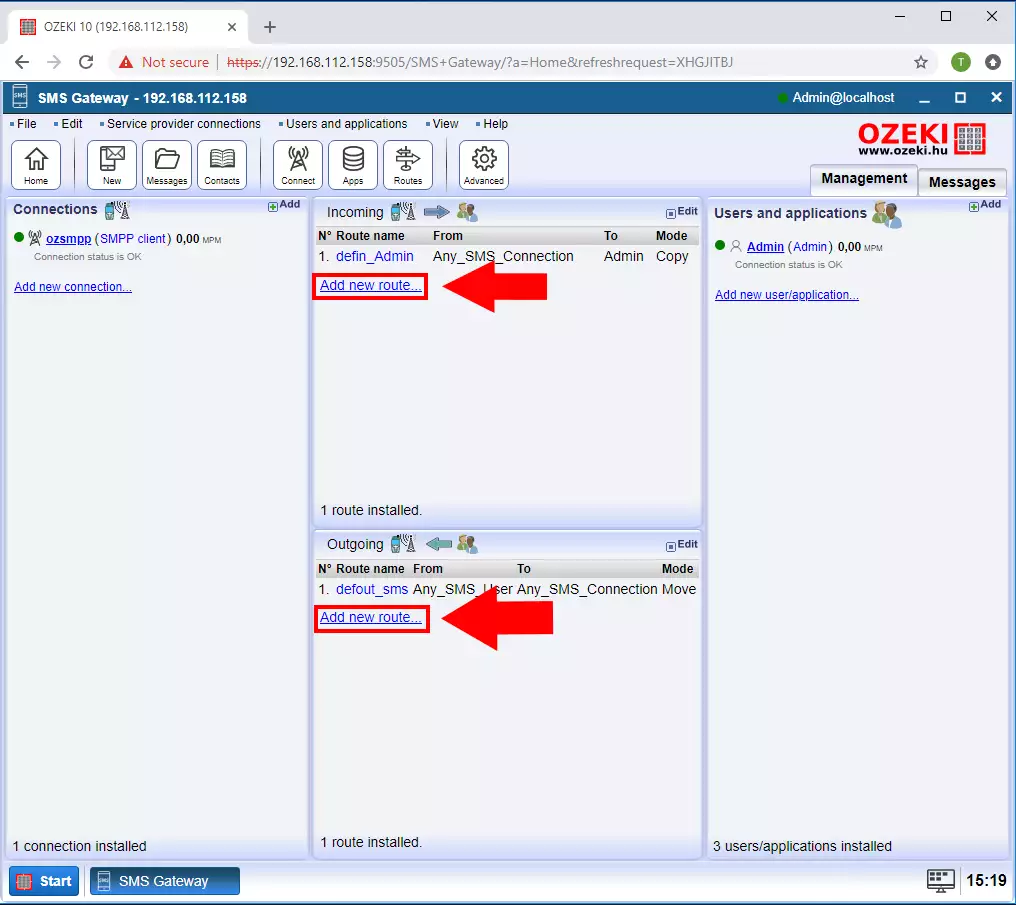
Now you need to provide an address where the route will take the message and a receiver address where it will deliver it. Make sure to name the connection something that you will be able to remember and something distinguishable to prevent mixing up two connections in the setup process. (Figure 3)
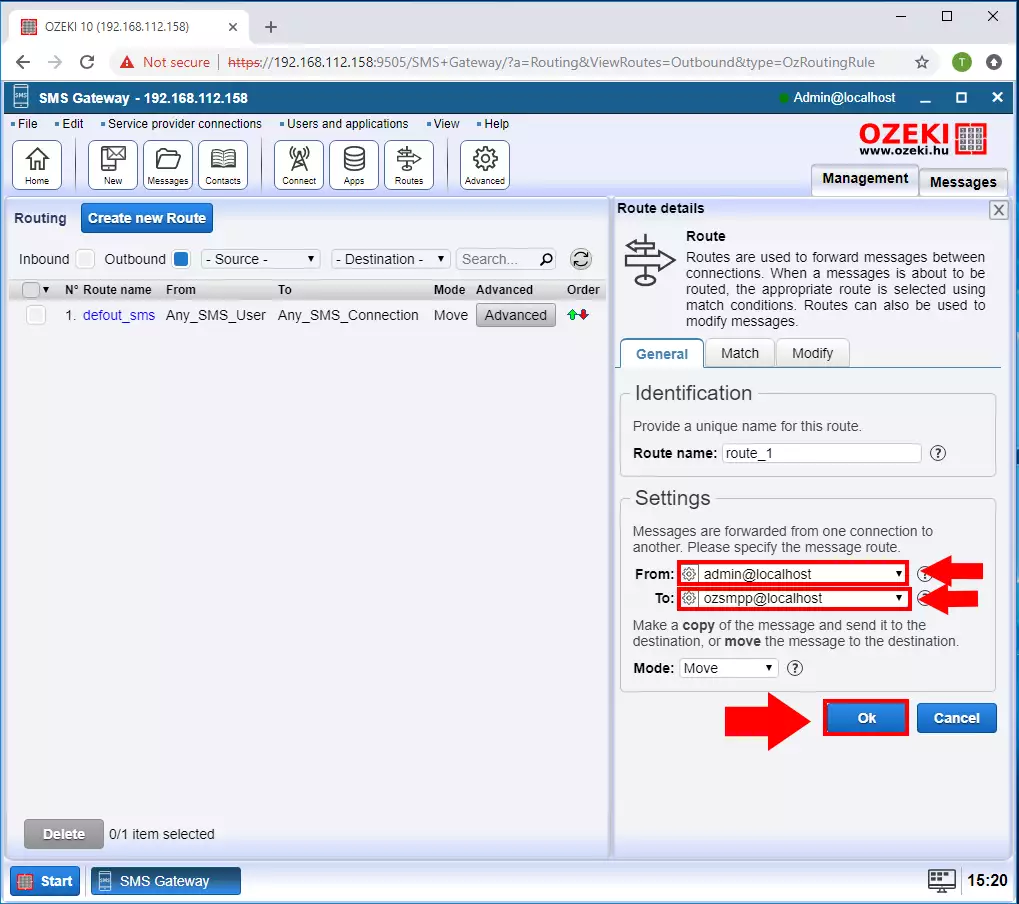
To add the sender ID to the route, click the Advanced button in the list of routes. It is located in the line with the name of the route. Click it to get to the Advanced menu of the selected route. (Figure 4)
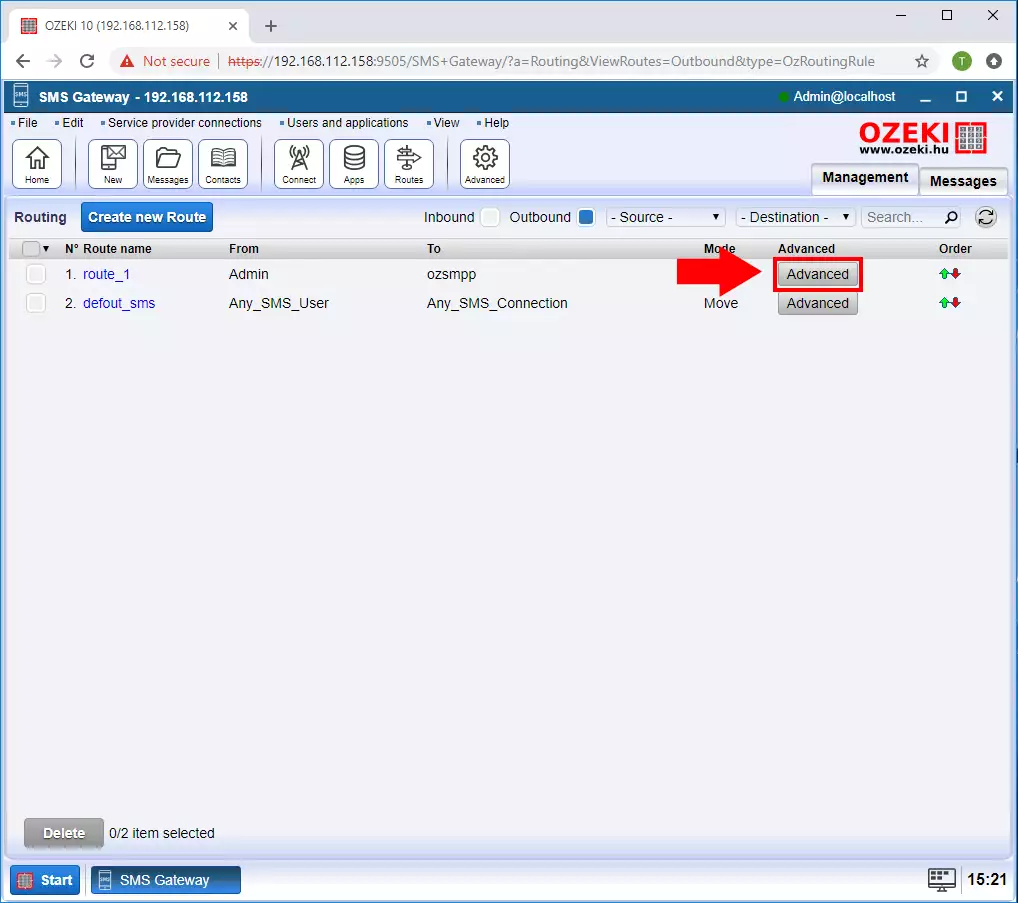
In the Advanced menu, you will see that there are 3 tab pages. Configure where you can add new sender and receiver, Condition where you can add parameters that will be identified, and the message will be modified according to the settings. The final one is the modifications. In the modification page, you can set up a system that will modify all the message in this route. Click it to proceed to the next step. (Figure 5)
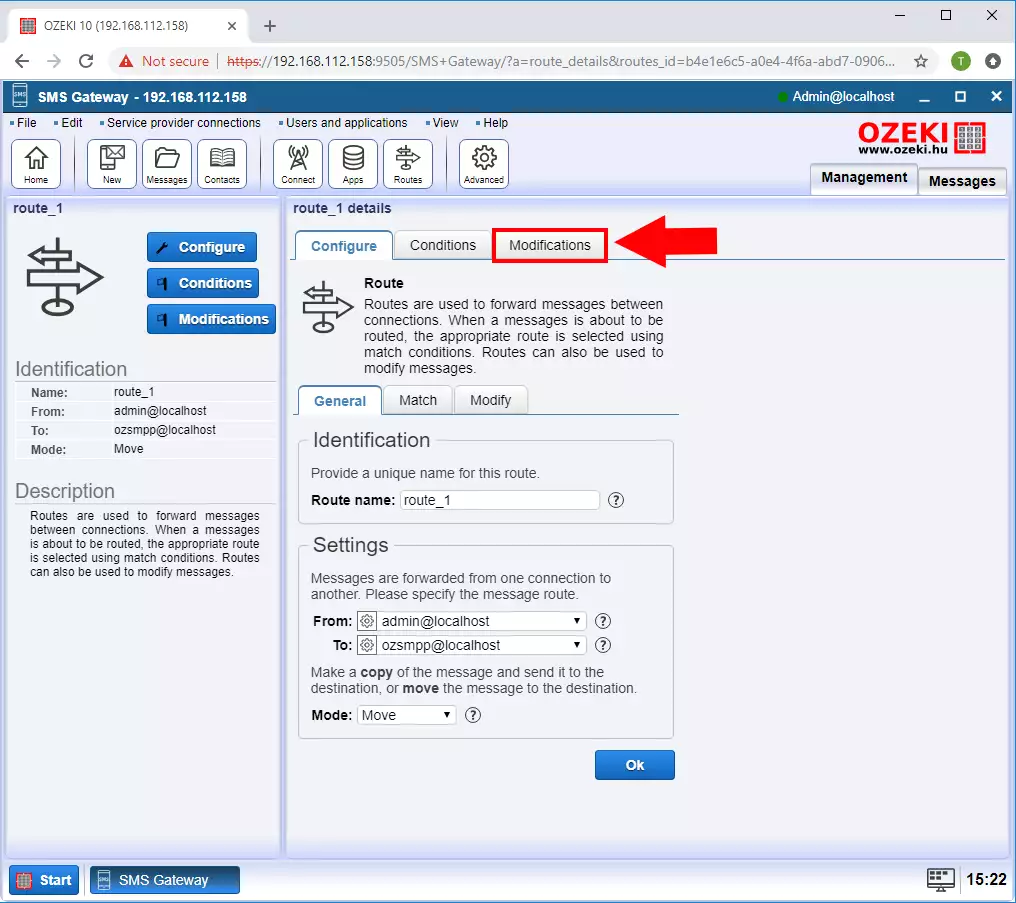
To create a modifier that will randomly select a sender ID from a list, click the blue Create new Modifier button. Then you will see a list of possible modifiers to choose from. Choose the random sender. Click it and proceed to the next step. (Figure 6) It will take you to a page where you can give the modifier a list of senders to choose from.
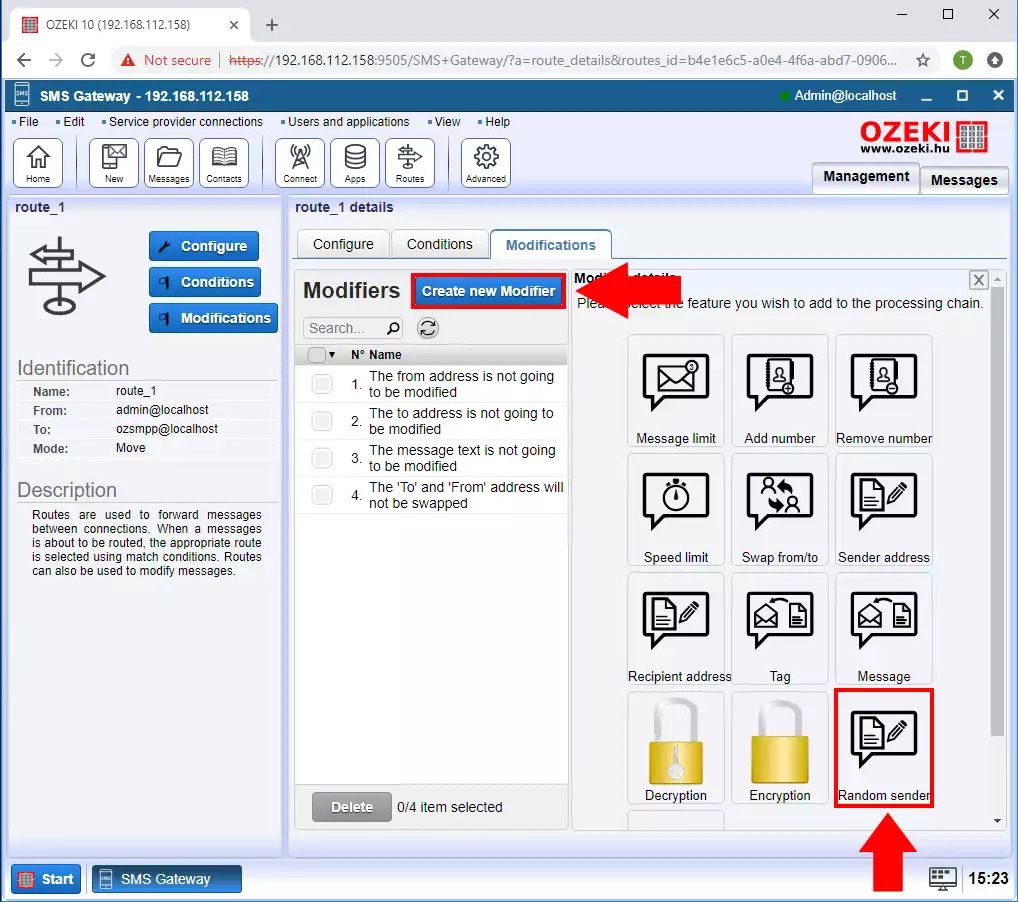
In this step, you need to provide a list of phone numbers that the modifier will choose from (Figure 7). This address will take the place of the sender ID when sent. It will be valid for all the messages sent on this route.

Make sure to delete the unnecessary modifiers to prevent performance issues. Check the checkbox before all the modifiers you are not using and click the Delete button (Figure 8). In this example the deleted modifier would also interrupt the new modifier.
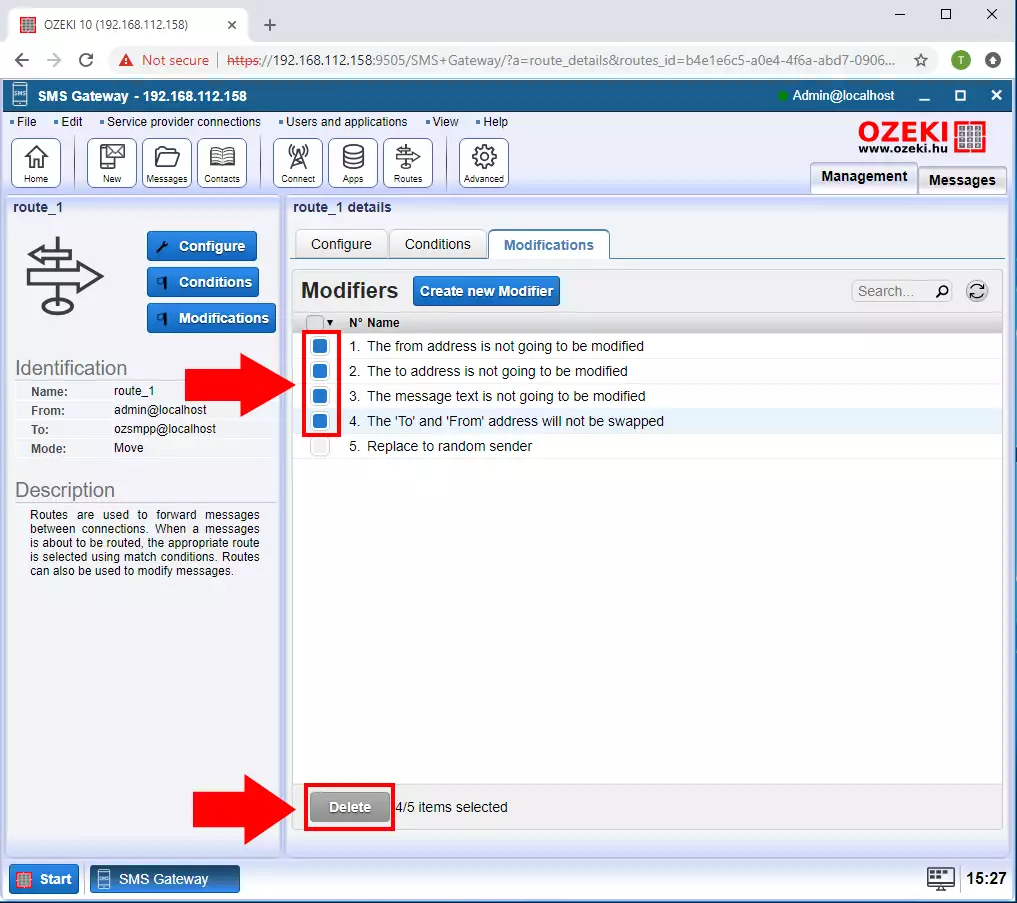
On the Home Page of the Ozeki SMS Gateway, you can see the list of currently working route. Now that you have created a new route, it should also be visible in the list. You can see the sender's name and the receiver's address in line with the name if the route (Figure 9).
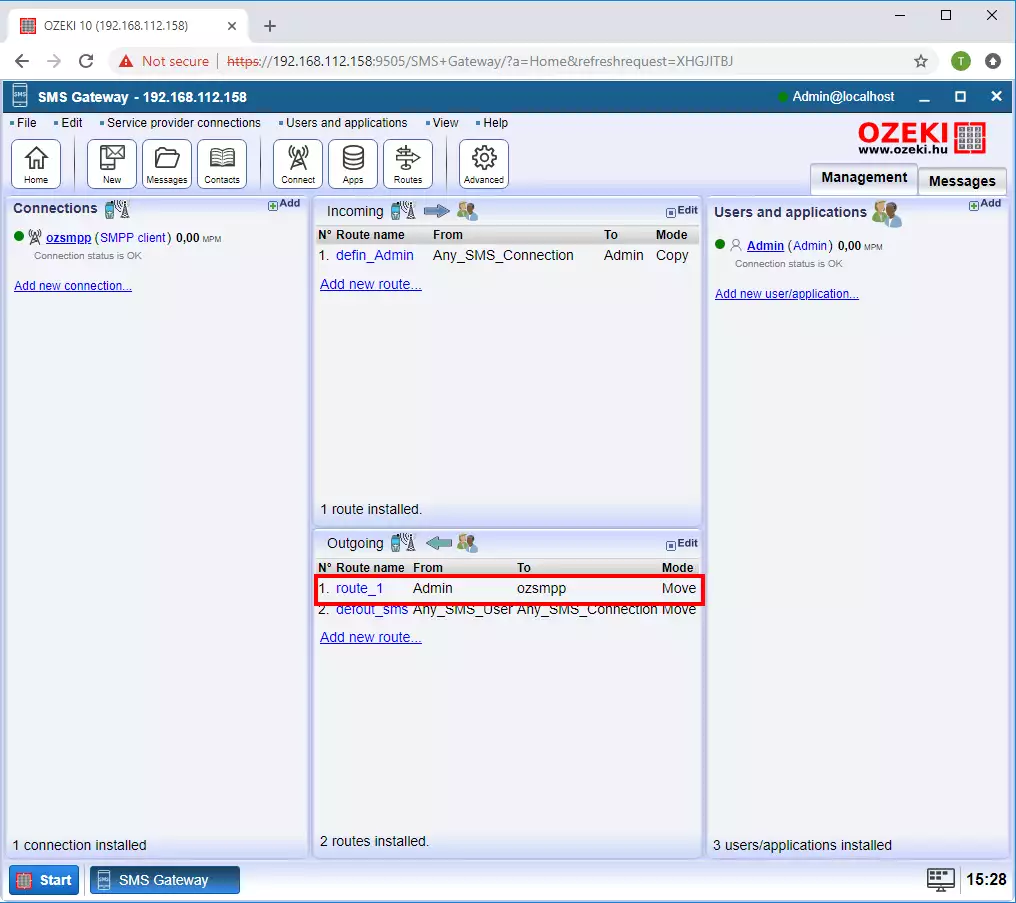
The modification will now try and replace the sender ID with something from the list. To enable it to do so, you need to make the sender ID overridable. Open the detail panel of the user that you are using to send messages from and search for the Telephone number group box. There you will find a checkbox titled Overridable (Figure 10). Check it so the modification will be able to override the sender’s telephone number.
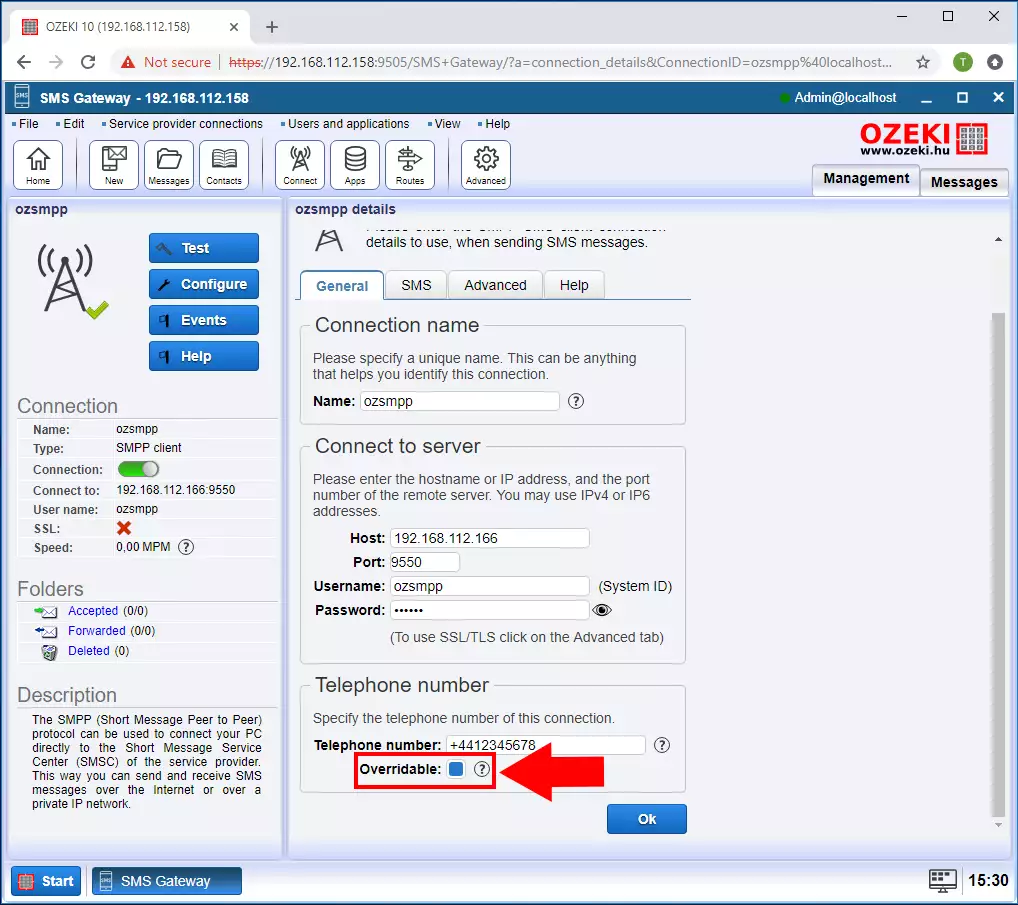
Now you have a working modifier. To test it, send some messages through the route and inspect the Sent folder. There you will see that each time, the sender is a different address (Figure 11). This means that the modifier is working.
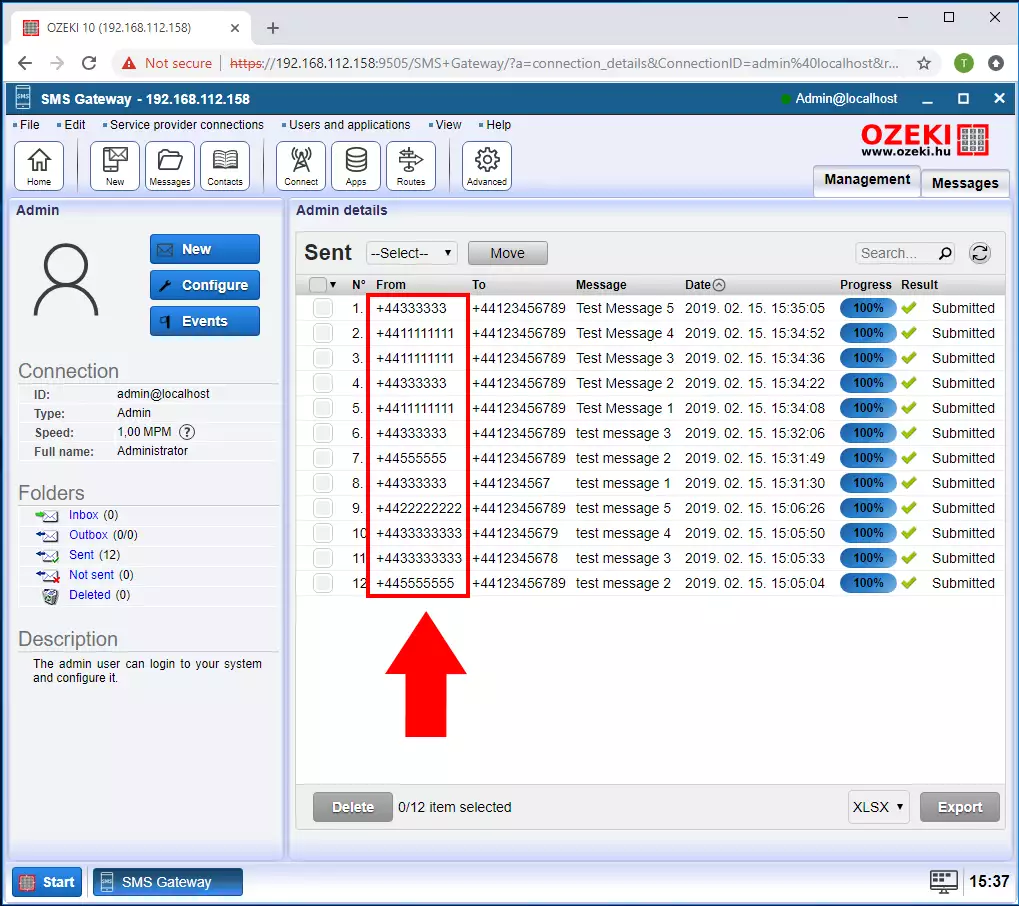
How to test the SMS sender ID configuration
To test the SMS sender ID configuration, the most obvious way is to send a test sms to a mobile phone and see where the SMS came from. The second method is to read the logs of the mobile network connection where the SMS was sent. The third option, is to setup an SMPP simulator, that consists of an sms tester connection and an SMPP server service and send a messages to this SMPP simulator and see the logs in the sms tester connection of the simulator PC.
FAQs
What is SMS routing?
SMS Routing is a mechanism employed within Short Message Service (SMS) gateway
systems to determine the final destination of an SMS message. This process
directs messages towards either a mobile network for delivery to a mobile
handset or to a specific user or application within the system itself.
Types of SMS Routing:
- Outbound SMS Routing: Focuses on controlling the selection of the mobile network utilized to transmit a message to the recipient's mobile device. This is primarily employed for messages categorized as Mobile Terminated (MT).
- Inbound SMS Routing: Governs the designation of the application within the system that will receive a message originating from a mobile phone. This applies to messages classified as Mobile Originated (MO).
- Sender Phone Number: The phone number associated with the individual sending the message.
- Recipient Phone Number: The phone number of the intended recipient.
- Phone Number Prefixes: The initial digits of either the sender's or recipient's phone number.
- Message Content: The analysis of the text included within the message body. For instance, routing could be contingent upon the presence of specific keywords. (e.g., messages containing the word "urgent" could be directed to a designated application).
- Multiple mobile network connections (or SMS service provider connections) for message transmission.
- A variety of SMS applications capable of receiving messages within the system.
